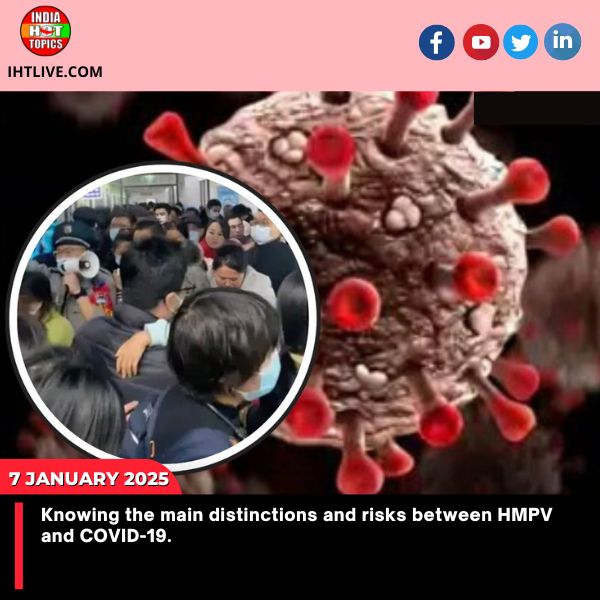Health
According to a study, oral medications are the most popular choice for treating multiple sclerosis.

Multiple sclerosis (MS) is a chronic autoimmune disease that affects the central nervous system, leading to a range of physical and neurological symptoms. Over the years, advancements in medical research have resulted in various treatment options for individuals living with MS. According to a recent study, oral medications have emerged as the most popular choice for treating the condition. In this blog, we explore the findings of the study, highlight the benefits of oral medications, and discuss their significance in managing multiple sclerosis.
The study, conducted by researchers in the field of neurology, aimed to analyze the treatment preferences among individuals with multiple sclerosis. The findings revealed that oral medications are the most favored choice among patients, surpassing other forms of treatment such as injectables or infusions.
Benefits of Oral Medications for Multiple Sclerosis.

The popularity of oral medications for MS treatment can be attributed to several advantages they offer: Convenience and Ease of Use: Oral medications provide a more accessible and user-friendly treatment option compared to injectables or infusions. They eliminate the need for frequent clinic visits or self-administration of injections, making it more convenient for individuals with MS to adhere to their treatment regimen. Improved Quality of Life: The availability of oral medications has significantly impacted the quality of life for people living with MS. By avoiding injections or infusions, individuals may experience reduced anxiety and discomfort associated with these administration methods.
Increased Treatment Options: The introduction of oral medications has expanded the range of treatment options available to individuals with MS. This allows healthcare providers to tailor treatment plans based on the patient’s specific needs, preferences, and disease characteristics. Efficacy and Safety: Oral medications have demonstrated efficacy in managing multiple sclerosis symptoms and disease progression. They have been extensively studied and approved by regulatory bodies, ensuring their safety and effectiveness.
Significance for Managing Multiple Sclerosis
The preference for oral medications in treating multiple sclerosis highlights a positive shift in disease management. It reflects the advancements in pharmaceutical research and the commitment to developing treatments that prioritize patient comfort and well-being. Moreover, the popularity of oral medications encourages better adherence to treatment plans, as individuals are more likely to comply with medication regimens that are easy to administer and integrate into their daily routines. Improved adherence enhances the effectiveness of treatment, leading to better disease control and potentially slowing down the progression of MS.
It is important to note that the choice of treatment should be made in consultation with healthcare professionals who can evaluate individual factors such as disease severity, progression, and potential side effects. Healthcare providers play a critical role in guiding patients towards the most appropriate treatment options based on their unique circumstances. The study revealing oral medications as the most popular choice for treating multiple sclerosis sheds light on the significant progress made in MS management. The availability of these medications has revolutionized the treatment landscape, offering individuals with MS more convenient, accessible, and effective options.
As research continues to advance, it is expected that further innovations and treatment breakthroughs will emerge, ultimately improving the quality of life for individuals living with multiple sclerosis. The popularity of oral medications represents a positive development in the quest to empower patients and enhance their overall well-being in the face of this chronic condition.
General News Platform – https://ihtlive.com/
Entertainment News Platforms – anyflix.in
Construction Infrastructure and Mining News Platform – https://cimreviews.com/
Podcast Platforms – https://anyfm.in/
India
Covid 19 India Cases Live Updates: Active cases rise to nearly 5,000, 7 deaths reported in 24 hours
.jpg)
State-wise Breakdown
Kerala remains the most affected state, with 1,487 active cases. Delhi and Maharashtra follow, reporting 562 and 526 active cases respectively . Other states such as Gujarat, Karnataka, West Bengal, Tamil Nadu, and Uttar Pradesh have also seen noticeable increases in active cases.
Emerging Variants and Diagnostic Challenges
The resurgence is partly attributed to new variants, notably NB.1.8.1, which exhibit higher transmissibility. These variants often present with milder symptoms resembling common colds or flu, such as low-grade fever, fatigue, and cough. This similarity complicates timely diagnosis and may lead to underreporting .
Government Response and Public Health Measures
In response to the uptick in cases, health authorities have conducted review meetings and directed states to ensure readiness with essential supplies. The public is urged to maintain hygiene and seek medical attention if experiencing respiratory symptoms as the ministry closely monitors the situation .
Public Advisory
Health experts advise the public to remain vigilant. Individuals experiencing symptoms such as fever, cough, or fatigue should seek medical advice promptly. High-risk groups, including the elderly and those with underlying health conditions, are particularly encouraged to take preventive measures.
India is once again witnessing a slow but worrying uptick in COVID-19 cases, prompting health experts and officials to revisit pandemic protocols that had largely faded from public memory. As per the latest data released by the Ministry of Health and Family Welfare, the number of active COVID-19 cases in the country has climbed to approximately 4,866, marking a noticeable increase over the past few days. In the preceding 24-hour period alone, India reported 564 new cases and seven deaths attributed to COVID-related complications.
Among the deceased is a five-month-old infant, serving as a grim reminder that the virus remains dangerous across all age groups. While this resurgence is nowhere near the peak levels seen during the Delta or Omicron waves, the rapid climb from under 2,000 active cases just weeks ago has raised concerns about a potential localized outbreak or seasonal spread. Kerala, which has historically experienced higher caseloads during previous waves, currently tops the chart with nearly 1,487 active cases.
Delhi follows with 562 cases, and Maharashtra stands close behind at 526, indicating that urban and densely populated regions continue to be hotspots. Other states such as Tamil Nadu, Karnataka, West Bengal, Gujarat, and Uttar Pradesh are also reporting a steady rise in daily case counts, although they remain under the 500 mark.
What adds complexity to the current situation is the emergence of new sub-variants, notably NB.1.8.1, which appear to be driving the present surge. Unlike earlier strains, this sub-variant is said to spread faster but often manifests in symptoms that mimic those of seasonal flu — such as low-grade fever, dry cough, fatigue, and occasional sore throat — making detection difficult without targeted testing.
In many cases, infected individuals initially assume they are suffering from the common cold or seasonal allergies and delay seeking medical care, increasing the risk of community transmission. Doctors across hospitals in metro cities have reported that several patients only test positive for COVID after secondary or tertiary symptoms emerge, often resulting in a lag in treatment and isolation measures.
This diagnostic challenge is also contributing to underreporting, as people shy away from testing unless symptoms become severe. Experts warn that such complacency could lead to undetected clusters and recommend that anyone experiencing prolonged flu-like symptoms undergo testing, particularly those with underlying health conditions or weakened immunity.
In response to the rising case numbers, the Indian government has begun taking precautionary steps. Union Health Minister-led review meetings have been conducted to assess state-level preparedness.
Hospitals have been instructed to stock up on essential supplies, including PPE kits, oxygen cylinders, antiviral medication, and to ensure that ICU beds and isolation wards are functional. States have been directed to revive COVID war rooms and surveillance systems temporarily, especially in high-risk zones and transportation hubs.
District health officials in Kerala and Maharashtra have already reinstated mobile testing vans in public places like railway stations, airports, and markets to ensure early identification of potential cases.
However, authorities are treading a careful line, avoiding full-blown restrictions to prevent public panic or economic disruption, and instead focusing on enhanced monitoring and communication.
Public health advisories have also been updated. Citizens are encouraged to practice respiratory hygiene, such as wearing masks in crowded indoor spaces, regularly sanitizing hands, and maintaining physical distancing wherever feasible.
Those experiencing flu-like symptoms are advised to avoid public gatherings and seek medical consultation at the earliest. Booster vaccinations, although no longer mandatory, are being strongly recommended for vulnerable populations — including senior citizens, people with comorbidities, and frontline workers. While vaccination rates in India remain high, especially in urban centres, health authorities are now encouraging states to initiate local awareness drives to encourage booster uptake, particularly in semi-urban and rural regions.
Recent genome sequencing reports suggest that while the current strain does not lead to severe hospitalization in most healthy individuals, patients with coexisting illnesses — such as diabetes, respiratory diseases, or cardiac conditions — may face higher risks, necessitating timely intervention.
Educational institutions and offices have been advised to remain alert and monitor the health of students and staff. So far, no decisions have been made regarding closures or reverting to remote operations. However, many IT companies have begun recommending hybrid work setups once again, especially for employees showing even mild symptoms of illness.
In schools and colleges, periodic screening and health monitoring initiatives have been reintroduced. Several private hospitals in Bengaluru, Chennai, and Mumbai have reported a modest increase in the number of walk-in patients requesting COVID tests over the past week — a sign that public awareness is gradually rising. However, experts caution that proactive measures must continue if the country is to avoid a repeat of past surges.
Adding to the complexity is the simultaneous occurrence of seasonal flu outbreaks in several parts of the country, particularly in North India, where weather fluctuations are common during this time of year. Many doctors are finding it difficult to distinguish between influenza and COVID-19 without proper diagnostic tests, further burdening healthcare infrastructure.
Although hospitalizations remain relatively low, the medical community is urging people not to take the current wave lightly. They emphasize that a small percentage of infections can still evolve into serious respiratory complications requiring hospital admission, especially if diagnosis or treatment is delayed.
Public sentiment, meanwhile, remains mixed. After enduring multiple lockdowns and disruptions since 2020, many citizens are understandably fatigued by the reappearance of COVID-related headlines. While some have returned to mask-wearing and hand hygiene habits, others continue to treat the situation casually, attributing symptoms to routine flu or dust allergies. This divide poses a challenge for public health messaging, which needs to strike a balance between awareness and alarm. Social media platforms are also being monitored to curb the spread of misinformation and fake remedies that tend to gain traction during health emergencies.
In conclusion, while the number of active COVID-19 cases in India remains well below critical thresholds, the recent spike underscores the virus’s continued presence and adaptability. The emergence of new variants, combined with milder symptoms and reduced public vigilance, creates a fertile ground for future flare-ups.
Government agencies, healthcare professionals, and citizens must now work together to ensure that India’s hard-earned progress in pandemic management is not undermined by complacency. With schools open, festivals around the corner, and increased travel across the country, it is imperative that basic precautions be maintained. Timely diagnosis, voluntary isolation, mask usage, and booster vaccination are simple yet powerful tools that can help India prevent another wave from escalating into a crisis.
- Group Media Publication
- Construction, Infrastructure and Mining
- General News Platforms – IHTLive.com
- Entertainment News Platforms – https://anyflix.in/
Health
In a lavender Manish Malhotra saree, Hania Aamir sports her most gorgeous ethnic ensemble to date. View its astounding cost.

Hania Aamir serves stunning ethnic fashion inspiration in lavender Manish Malhotra tissue saree. Wondering how much it costs? Scroll down for all the details.
Hania Aamir is leaving fashion lovers spellbound with her stunning ethnic diaries. The Pakistani actor has been rocking back-to-back traditional outfits by Indian designers, turning her Insta feed into a goldmine of fashion inspo. For her latest look, the 27-year-old slipped into six yards of grace and looked straight out of a royal fairytale. Let’s break down her saree look and steal some style tips for your ethnic wardrobe. Hania Aamir stuns in lavender saree
On Monday, Hania took to Instagram and uploaded a series of gorgeous snaps accompanied by the caption “gave mermaid.” Draped in a dreamy lavender saree, the star looked absolutely breathtaking while serving some striking glam poses. Let’s take a moment to soak in her ethereal beauty.
Hania’s saree is crafted from luxurious tissue fabric and features intricately embroidered borders, showcasing stunning zari work, beads, and sequin detailing throughout. Draped to perfection, she let the pallu elegantly cascade from her shoulder, adding a regal charm to her look. She teamed it up with a matching embroidered blouse, complete with delicate handmade tassels at the back.
How much does her saree cost?
Can’t stop swooning over Hania’s gorgeous saree? We’ve got all the details you need to add this stunner to your collection. Her six yards is straight from the shelves of ace designer Manish Malhotra and is priced at ₹3,95,000.
Hania accessorised her ethnic look with dazzling diamond jewellery, including statement drop earrings, a chic choker necklace, a sleek bracelet, and a stunning ring adorning her finger. Her dewy makeup featured shimmer eyeshadow, winged eyeliner, mascara-coated lashes, blushed cheeks, a luminous highlighter, and glossy nude lipstick. With her long, luscious tresses left loose in a side partition, she perfectly finished off her look.
Group Media Publications
Entertainment News Platforms – anyflix.in
Construction Infrastructure and Mining News Platform – https://cimreviews.com/
General News Platform – https://ihtlive.com/
Health
Knowing the main distinctions and risks between HMPV and COVID-19.

As India logs 5 cases of HMPV, here’s all you need to know about how human metapneumovirus is different from Covid-19 and warning signs to watch out for.
HMPV virus is not a novel virus – it was first isolated in 2001 by Van den Hoogen and her colleagues in Netherlands in the nasopharyngeal secretions of children with respiratory tract infections. The virus was named human metapneumovirus because it was a metapneumovirus that used humans as a host.
The human metapneumovirus (hMPV) is a common respiratory virus that typically causes mild cold-like symptoms. Studies show it has circulated in human populations since the 1970s, though it was first identified by scientists in 2001.
The virus accounts for 4-16% of acute respiratory infections globally, with cases usually peaking between November and May. While most adults have developed immunity through previous exposure, hMPV can cause more severe symptoms in infants encountering it for the first time and in people with weakened immune systems.
In an interview with HT Lifestyle, Dr Sangeeta V Budur, Consultant – Paediatrics and Paediatric Intensive Care at Aster RV Hospital, shared, “It is known to cause a range of illnesses from mild upper respiratory infections to severe pneumonia , bronchiolitis and acute respiratory distress syndrome. About 5 to 25% of the acute pediatric lower respiratory tract infections are associated with HMPV. The viral outbreaks peak in winter and spring season in northern hemisphere and June and July in southern hemisphere.”
Who are the vulnerable population?
Dr Sangeeta V Budur revealed, “No age group is immune to the virus, reinfection occurs throughout the life but subsequent infections are mild. Infants, children under 2 years, elderly, Immuno-compromised persons or those with underlying chronic medical conditions are more vulnerable to the severe disease. The HMPV infection appears to be ubiquitous, as virtually all children are exposed by the age of 5 years.”
How does it spread?
According to Dr Sangeeta V Budur, just like any other respiratory illness, HMPV spread via respiratory droplets i.e. coughing, sneezing or contact with infected secretions.
How is it different from Covid -19 ?
Dr Sangeeta V Budur informed, “Both viruses cause minor respiratory symptoms in most of the infected people but Covid -19 has a broader spectrum of symptoms involving multiple body systems and a higher potential for systemic complications. The comparison between the two viruses is difficult though the spread is through the droplets via the respiratory route in both. HMPV is less transmittable and has less severe symptoms as compared to Covid-19.”
What are the symptoms of HMPV virus?
Dr Sangeeta V Budur answered, “Most of the symptoms are mild flu like lasting 5- 7 days requiring outpatient visits. But in children under five , HMPV is responsible for 3-10% of hospital admissions. Among the hospitalized children high grade fever, respiratory distress, wheezing rare the predominant symptoms.”
What are the respiratory illnesses caused by HMPV?
As per Dr Sangeeta V Budur, HMPV is mainly known to cause upper respiratory tract infection in most of the children but bronchiolitis, severe pneumonia, acute respiratory distress syndrome in few which require hospitalization, oxygen therapy including mechanical ventilation.
How to diagnose HMPV infection?
Dr Sangeeta V Budur highlighted, “Diagnosing HMPV based solely on symptoms is difficult, as it mimics other respiratory infections like respiratory syncytial virus( RSV) and influenza. PCR testing on nasopharyngeal secretions for detecting HMPV RNA is the gold standard. In India, surveillance systems like ICMR and the Integrated disease surveillance Programme( IDSP) regularly test for respiratory viruses including HMPV.”
What are treatment options for HMPV?
There is no specific antiviral drug available. Dr Sangeeta V Budur said, “Treatment is mainly symptomatic and supportive with antipyretics and antihistaminics. Hospitalised children may need oxygen therapy , nebulizations and rarely mechanical ventilation among the severely infected.”
What are preventive measures for HMPV?
As of now there is no targeted therapy/vaccine available for HMPV. Dr Sangeeta V Budur suggested, “Proper hand hygiene – washing hands frequently with soap and water for at least 30 seconds. Cough etiquette such as covering the nose and mouth while sneezing and coughing, wearing a mask can limit the spread of the virus. Avoiding close contact with infected individuals, regularly disinfecting touched surfaces are additional measures.”
Group Media Publications
Entertainment News Platforms – anyflix.in
Construction Infrastructure and Mining News Platform – https://cimreviews.com/
General News Platform – https://ihtlive.com/
-
Tech4 months ago
Best Zebronics Bluetooth speakers you can buy today for an unmatched audio experience
-

 India2 years ago
India2 years agoNew Season 8 The Walking Dead trailer flashes forward in time
-

 India2 years ago
India2 years agoThe afternoon briefing revealed that 97.26% of the ₹2000 notes were returned, and the Israeli Prime Minister committed to war goals.
-

 World12 months ago
World12 months agoMichigan splash pad attack: A couple was shot seven times in total while defending their two small daughters.
-

 India2 years ago
India2 years agoSrikanth Venkatachari is appointed as the new chief financial officer by Reliance Industries.
-

 India2 years ago
India2 years agoPM Modi’s Three-Nation Tour Begins with a Traditional Welcome in Papua New Guinea
-

 Special 365 days2 years ago
Special 365 days2 years agoFlag Day of India
-

 India8 years ago
India8 years agoThe 9 worst mistakes you can ever make at work









.jpg)
%20(1).jpg)